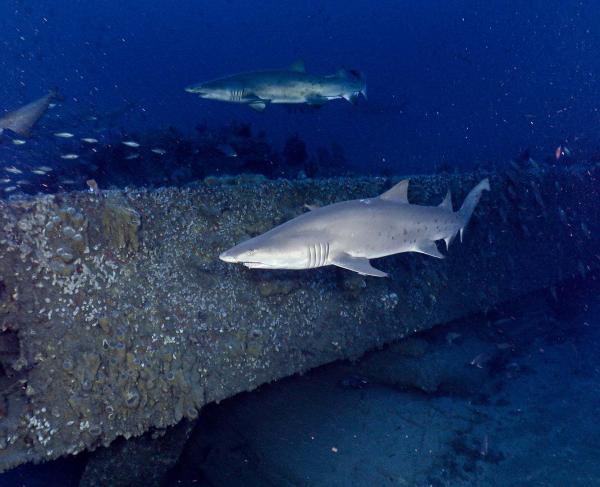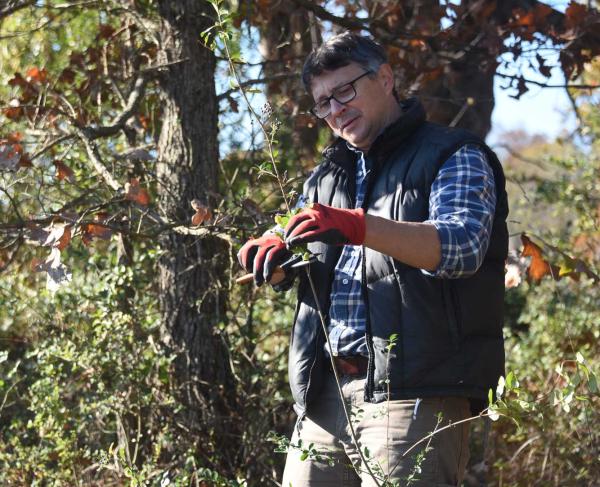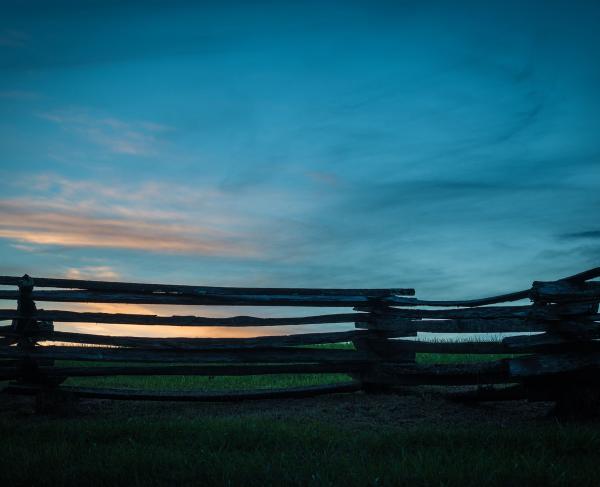Preserving Kentucky's Civil War Battlefields
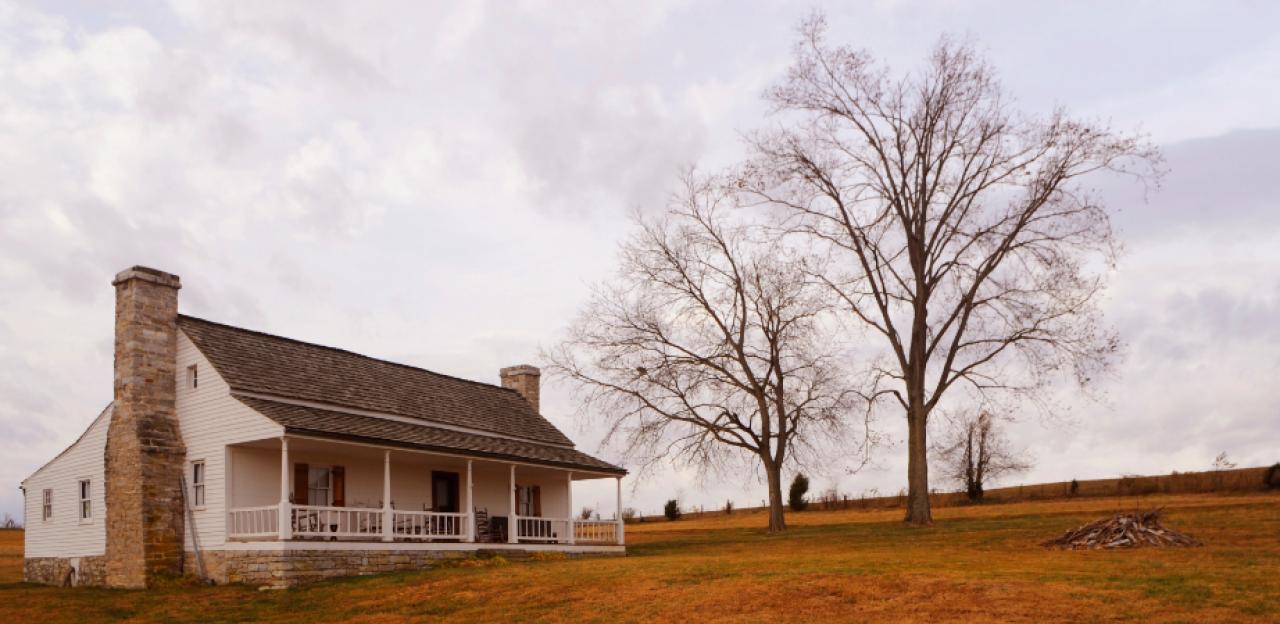
Many battlefields of the Bluegrass State are blessed with outstanding management and advocacy groups to their protection and interpretation. In 2010, the Civil War Trust invited the leaders of these organizations to share some of what makes these sites unique — the successes they've had and the challenges they still face. We hope their stories will serve as an introduction to all that these Bluegrass battlefields have to offer.
Mill Springs: No Longer a Footnote
By Karyn Branham, Assistant Executive Director, Mill Springs Battlefield Association
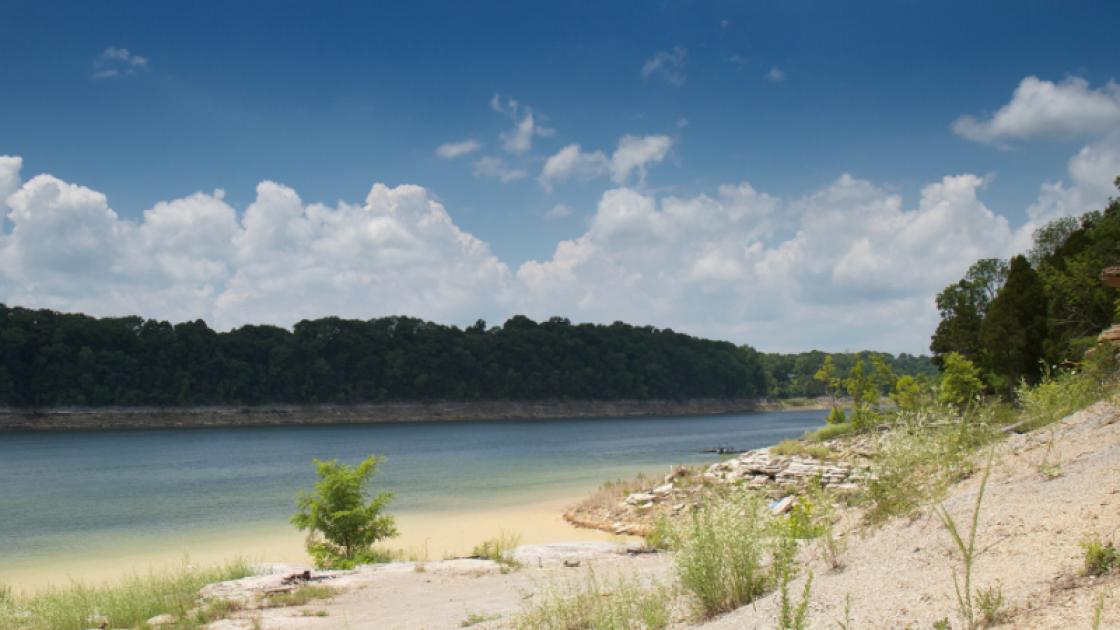
January 19, 1862
Brig. Gen. Felix K. Zollicoffer never could have imagined, in the years preceding January 19, 1862, that he would be facing Brig. Gen. George H. Thomas's Federal forces on a cold, rainy Sunday morning near a sleepy little community called Logan's Crossroads, Ky., nine miles north of the Cumberland River. Zollicoffer had been a Union man, a member of the Whig Party, a three-term U.S. Congressman and a newspaper editor from Nashville, Tenn., and he had served in the Second Seminole War in Florida. However, when southern states began to secede from the Union, like many, he chose to support his state, taking command of Confederate forces in East Tennessee at the behest of Gov. Isham Harris.
Zollicoffer invaded Kentucky in the fall of 1861 and was forced to retreat at the Battle of Camp Wildcat, north of present-day London, Ky. After retreating back to the Cumberland Gap, Zollicoffer moved his army to Mill Springs, on the south side of the Cumberland River. He planned to use this winter camp to guard the fords leading to central and eastern Tennessee. Mill Springs had plenty of water and a grist mill, and supplies could be sent up river from Nashville.
Zollicoffer made a fateful decision to move his army across the river to Beech Grove, which resulted in the combining of Federal forces at Logan's Crossroads (now present day Nancy, Ky.) to plan an attack on Beech Grove. Jefferson Davis sent Maj. Gen. George B. Crittenden to take over command of Zollicoffer's army, leaving him in command of one brigade. What transpired in the coming battle resulted in Zollicoffer's death and the first major Federal victory of the war.
The rain, smoke and fog caused the visibility to be minimal, and against the advice of his aids, Zollicoffer rode up the Mill Springs Road to get a better view of the troop movements. Unknowingly, he rode up to a Federal officer from Danville, Ky., named Speed Fry. Realizing his mistake, Zollicoffer tried to bluff his way to safety and ordered Fry to stop firing on his own men. In reality, however, the Union soldiers of the 4th Kentucky were shooting at the Southerners of the 15th Mississippi Infantry. Zollicoffer might have gotten away, had not one of his aides rode up shouting "General, they are the enemy!" and fired upon Fry. The jig was up. Fry turned, fired his pistol and ordered his regiment to open fire. Zollicoffer and his two aides fell, mortally wounded, in the middle of the Mill Springs Road. After a bitter fight along the split-rail fence — punctuated by a bayonet charge by the 9th Ohio — the Confederates retreated in disorder and crossed the Cumberland River later that night.
The Confederate defeat caused far-reaching results during the following months. The Southern defensive line across southern Kentucky and northern Tennessee was blown wide open, giving Union forces the opportunity to move down the Tennessee River and attack Fort Henry and Fort Donelson, ultimately resulting in the devastating Battle of Shiloh. An additional quirk of the engagement is that it has more names than any other Civil War battle: the Battle of Fishing Creek, Logan's Crossroads, Old Fields, Somerset and Mill Springs among the most noted.
The Battle of Mill Springs had been a footnote in history, overshadowed by the larger battles of the Civil War that followed. It wasn't until 1992, when the Mill Springs Battlefield Association was formed, that the battle's significance was brought back to life. Since then the MSBA has acquired, with the help of the Civil War Trust, nearly 500 acres of battlefield land, restored two historic houses, created two walking trails, placed numerous interpretive signs and built a 10,000-square-foot visitor center. The visitor center and museum, located in Nancy, Ky., acts as the information hub for the entire battlefield, drawing thousands of visitors per year. The MSBA also holds several annual events each year.
Richmond: A Decade of Reinvention
By Phillip Seyfrit, Director, Madison County Historic Properties
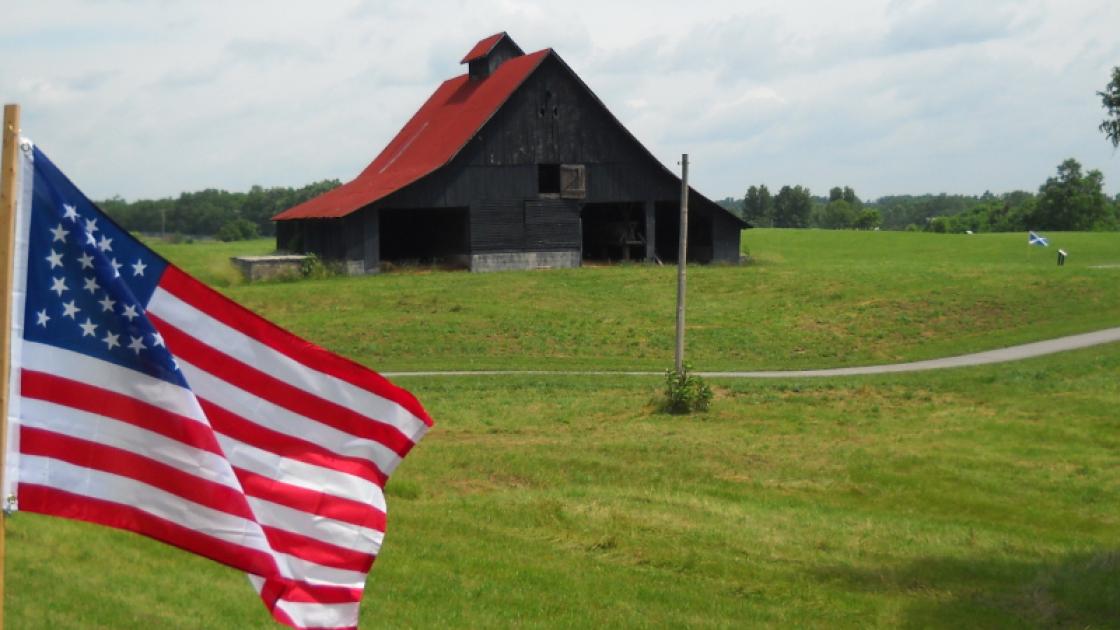
January 29 – 30, 1862
Just eight short years ago, if people visited Richmond, Ky., hoping to learn about the battle fought here in August 1862, they found only three Kentucky Historical Markers. Pretty embarrassing for the second largest Civil War battle fought in the Commonwealth of Kentucky.
But in November 2001, a group of concerned private citizens bought a 62-acre tract that encompassed a significant portion of the battlefield. Then the question was asked, "What now?" Turns out, the work had only just begun.
With the cooperation of the Madison County Fiscal Court, the Civil War Trust has been able to secure funding through several public and governmental sources to save this endangered and nearly forgotten Civil War battlefield. Properties are owned and managed by the Madison County Fiscal Court, and the Battle of Richmond Association works closely with this governmental body to provide programming and interpretive events during the year. Another friends group, the Friends of the Richmond Battlefield, for descendants of those who fought at the Battle of Richmond. The Madison County Civil War Roundtable and the Madison County Historical Society have both played prominent roles in this cooperative effort.
Since 2001, the preserved land at the Battle of Richmond has grown from zero acres saved to close to 600. Other important purchases, events and acquisitions have included the opening of the new Battle of Richmond Visitors Center (located inside the historic Rogers House, an 1811 structure that witnessed the battle), placement of more than two dozen interpretive markers and kiosks over the entire 18-mile course of the battlefield, renovation and interpretation of a slave quarters (which will be open in time for the 2010 CWT conference). Moreover, funding has been secured for interior renovation of an additional Civil War-era structure, the Pleasant View House at Richmond Battlefield Park.
The Battle of Richmond, Ky., pitted Confederates under Maj. Gen. Edmund Kirby Smith against Federal forces under Maj. Gen. William "Bull" Nelson. When the day-long fight in 98 degree heat was over, nearly the entire Federal force was routed and captured. Confederate Brig. Gen. Patrick Cleburne figured prominently in the early phase of the clash.
The Battle of Richmond, Ky., is classified as one of, if not the, most complete victory one side had over the other during the entire conflict, and is the only example of a Federal force "ceasing to exist" when a battle ended.
Members of the Civil War Trust should be very proud of all that has been accomplished at Richmond, Ky., for nothing could have been done without them. But much work still needs to be done. Several extremely important battlefield areas are threatened by development and encroachment. An additional Civil War structure, and significant battlefield landmark, is in desperate need of preservation.
Come and be a part of our success story. This year's conference will highlight this shining star in Civil War preservation. Everyone involved with the Battle of Richmond is eager to tell our story to the extended members of our preservation family.
Munfordville:
Western Theater Antietam
By Tres Seymour, Executive Director, Battle for the Bridge Historic Preserve
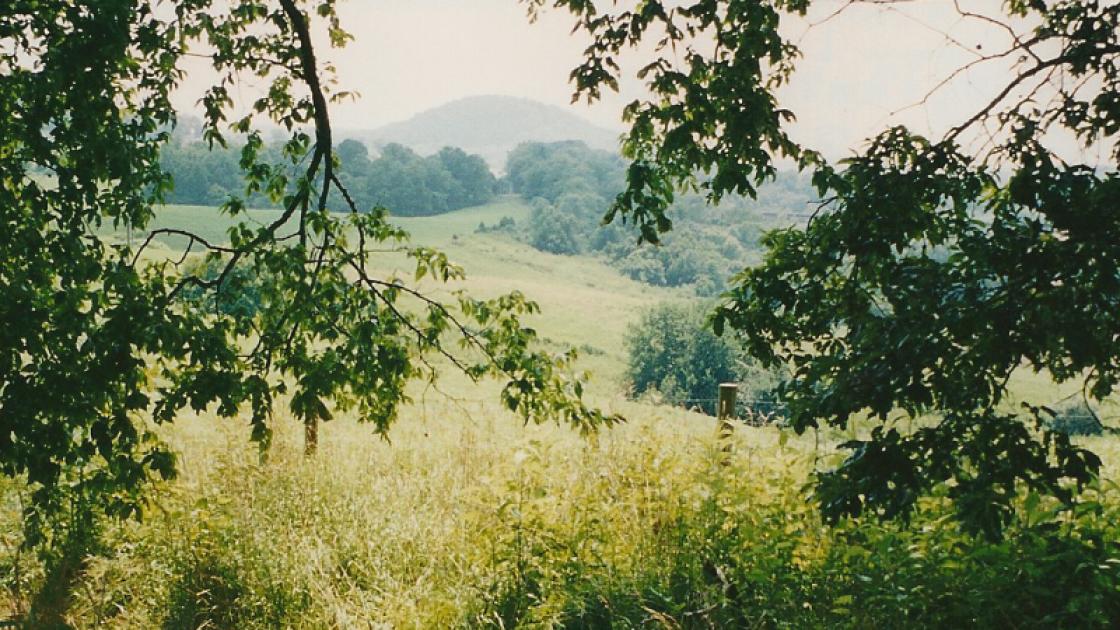
September 17, 1862
September 17, 1862, was an eventful day.
More than 7,000 Americans died in Maryland during what was the bloodiest battle in American military history at that time. A colossal explosion at the Allegheny Arsenal near Pittsburgh, Pa., took the lives of scores of workers. And near an ancient buffalo and Indian crossing on the Green River in Kentucky, a young Union colonel asked a Confederate general for advice.
Ask a reporter which of these three events is least likely to make the front page, and the answer will be just what one would expect — but some latter-day historians are taking a deeper look and finding critical importance in a long-overlooked historical episode.
The Battle and Siege of Munfordville was the first stroke of Confederate Gen. Braxton Bragg's 1862 Kentucky campaign — part of a broad-sweeping set of Confederate thrusts mounted in the fall of 1862 with the aim of securing the border states and the Mississippi River. Kentucky was a particularly coveted prize, for holding Kentucky would give the Confederacy a strong front protected by the Ohio and Mississippi rivers, and, as it was hoped, a great increase in manpower, supplies and industrial capacity. Indeed, Abraham Lincoln is often quoted as having said, "To lose Kentucky is to lose the whole game."
Bragg had sidestepped Union Maj. Gen. Don Carlos Buell and surged into Kentucky with loose plans to join forces with Maj. Gen. Smith, who had already opened the Bluegrass State to the Confederates with his victory at Richmond. Although Munfordville, like Richmond, lacked the sanguinary excess of Perryville, the Battle and Siege of Munfordville are particularly significant in that they raised Confederate expectations that the Kentucky campaign would result in the defeat of Buell's army and the recovery of Confederate power in the central and eastern portions of Kentucky and Tennessee. Bragg's invasion of Kentucky was like a great wave that surged, built to a dramatic crest, then broke and receded. The Battle of Perryville was the washing out of that wave and the dissipation of Confederate hopes. But the crest, the moment of the Confederacy's greatest potential in the West, was at Munfordville.
On the night of September 16, Union Col. John T. Wilder, inexperienced and uncertain whether surrender was prudent or even honorable, sought the help of the only man who might be able to help him. Confederate Gen. Simon Bolivar Buckner, coincidentally a Munfordville native, was surprised when a blindfolded officer was brought before him, astonished to discover that it was Col. Wilder, and flabbergasted when the young officer said, "Sir, I've come to ask you what I ought to do." By early the next morning, Buckner had secured the surrender for Bragg.
The story is well known among those who have studied the Western Theater of the war, but the Battle and Siege of Munfordville has itself long lain in the corner of Civil War scholarship, overshadowed in the period newspapers by reports of bloodier events at Antietam and Perryville, and correspondingly dismissed by historians whose focus lay primarily in the East. In the last decade and a half, however, new research and concentrated preservation efforts at Munfordville are revealing a picture of a war-long Union occupation, a focus of guerrilla activity and a significant area for research into the Underground Railroad. Munfordville and its environs, we are discovering, are not only a strategic high-water mark for the Confederacy in the West, but also a nexus of Civil War history in central Kentucky.
The new focus of research and preservation is timely — development, once slow in this sleepy agrarian county, has accelerated, with no land use controls to prevent uses adverse to the preservation of historic battlefields. In a major success in 2003, the Civil War Trust rescued 47 acres that are the joint footprint of the Battle and Siege of Munfordville and the December 1861 Battle of Rowlett's Station. CWT also assisted the local preservation organization, the Battle for the Bridge Historic Preserve, in securing a pivotal property that allowed the Preserve's 2¼-mile trail system to traverse the majority of the battlefield.
The Preserve is a partnership effort between the local 501(c)3 nonprofit, local landowners who have donated preservation easements in perpetuity, the Kentucky Heritage Council, and the Civil War Trust. The Preserve currently protects 220 acres of battlefield, with the historic Anthony Woodson House as its visitor center. Yet many more acres of pristine battlefield at this site are unprotected and at risk. Awareness of the importance of this battlefield is the key to its preservation, and as the Sesquicentennial approaches, the Battle for the Bridge Historic Preserve will be working with its partners to bring this battlefield to the attention of historians and the public alike, so as to ensure its future.
We like to think that September 17, 2012, will be an eventful day.
Perryville: A Landscape Unchanged
By Joni House, Program Coordinator, Perryville Battlefield State Historic Site
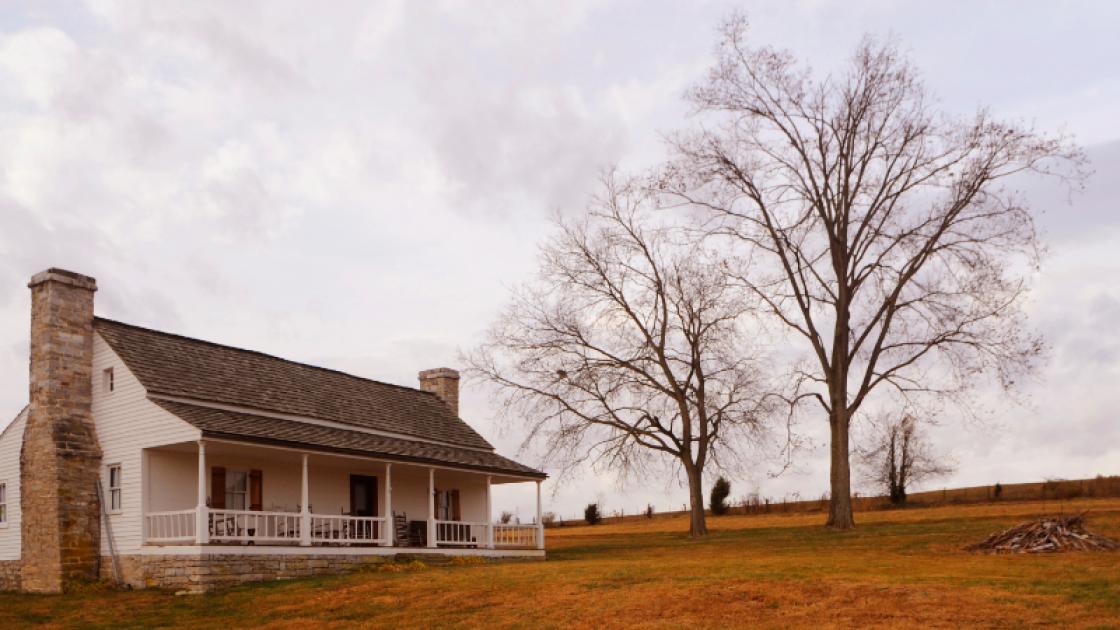
October 8, 1862
Perryville Battlefield State Historic Site is one of Kentucky's most pristine historic treasures. The largest Civil War battle fought within the Commonwealth occurred here on October 8, 1862, resulting in nearly 7,500 casualties. This battle impacted Kentucky so thoroughly that its effect is still felt today. The Perryville Battlefield's uniquely rural setting has enabled the land to remain unchanged for nearly 150 years, and the descendents of many of those who tended the land in 1862 still work their family farms in 2010. We are always very proud to say that if a Civil War soldier who fought at Perryville were to walk the battlefield today he would say, "I know this place — this is Perryville."
With the generous support of the CWT and other motivated partners, Perryville Battlefield State Historic Site has increased in size to nearly 750 acres of preserved land. However, much remains to be done if we are to preserve the major engagement areas. Recently, park staff was approached by a local landowner who wishes to sell crucial battlefield land to the park. With commitments from various partners, we are working on this acquisition. This land is nearly 140 acres of core engagement area that surrounds the historic H.P. Bottoms House. The acquisition of this property is essential to preserving the battlefield and removing any threat of development from the historic view-shed.
The business of preservation and interpretation is constantly underway at Perryville. The Perryville Battlefield Museum has recently undergone a complete renovation. With private funding and hundreds of hours of volunteer labor, the museum is now open to the public. Several ongoing projects are helping restore the battlefield to its wartime appearance. Recently a major land restoration project was completed as two modern structures were removed from the fighting ground of Union Col. George Penny Webster's Brigade. Webster — the great-grandfather of Judge William Webster, former director of the Federal Bureau of Investigation and the Central Intelligence Agency — was killed in action and his brigade suffered over 20 percent casualties. This, along with several other projects, is ensuring that Perryville will always be recognizable as one of America's most well preserved battlefields.
The park has nearly 12 miles of interpretive walking trails, which Ed Bearss has called one of the best interpretive walking trails in the country. In addition, a new interpretive movie and several award-winning school programs are helping educate the public about the importance of Perryville Battlefield and its preservation.
